Peugeot 208 vs Mazda 2 & Hyundai i20 - pictures
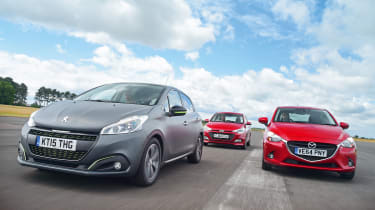
The Peugeot 208 has been given a mid-life refresh. We find out if the changes are enough to keep near the top of the supermini class. But with stiff competition in the form of the Mazda 2 and Hyundai i20, how will it fare?

Here we test the 208 in BlueHDi Allure spec. It's powered by a 1.6-litre diesel engine producing 99bhp. With all the options included on this car, it comes in at a dizzying £19,220. Without the options, it costs £17,045.
- Skip advertAdvertisement - Gallery continues below

The new 208 is refined on the move, but it tends to fidget on the motorway. The diesel engine makes more noise than its rivals here, but the Peugeot has plenty of punch.
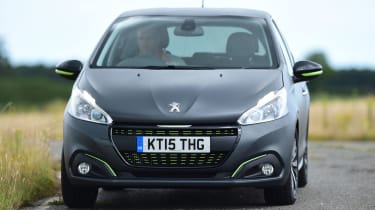
The driving experience is pretty much as it was, with surprisingly firm suspension and quick steering. There's strong grip and composure, too.
- Skip advertAdvertisement - Gallery continues below
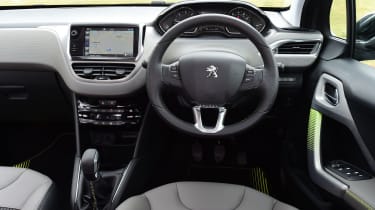
Inside, the small steering wheel can obstruct the view of the dials, but the cabin is well built. The touchscreen infotainment system can be fiddly, though.
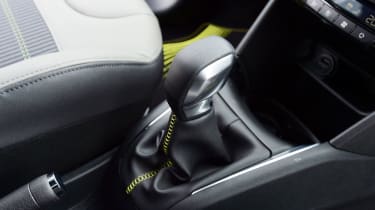
Long throw of the 208's five-speed manual gearbox meant that the car didn't perform brilliantly through the gears in our acceleration tests.
- Skip advertAdvertisement - Gallery continues below
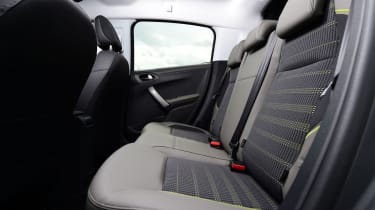
Rear seat space is good, with more room than you'll find in the Mazda, plus there's plenty of storage throughout the cabin.
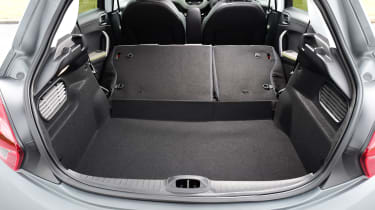
208 has a 285-litre boot that increases to 1,076 litres with the back seats folded. The load lip is quite high and the tailgate opening is on the small side.
- Skip advertAdvertisement - Gallery continues below
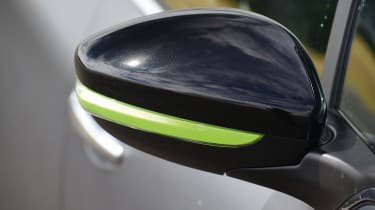
Peugeot offers a range of optional styling packs for the 208, giving buyers the chance to personalise the car to their heart's content.

208 is the cheapest company car choice in this test thanks to CO2 emissions of just 87g/km and the lowest list price.
- Skip advertAdvertisement - Gallery continues below
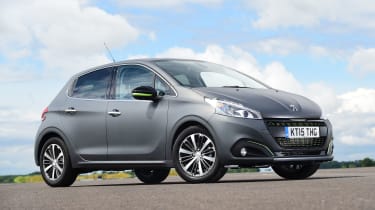
While the update is only minor, Peugeot has tweaked the 208 in all the right places. The front end looks tidier, and the personalisation options give it a premium edge, too.
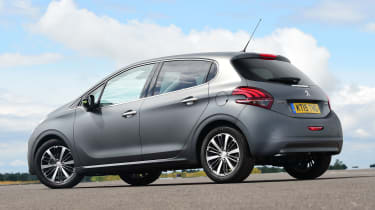
Some niggles remain in the 208, like the awkward driving position and troublesome infotainment system.
- Skip advertAdvertisement - Gallery continues below
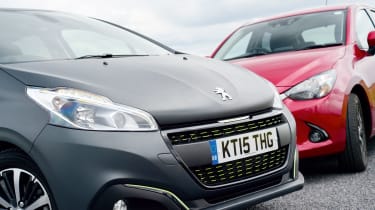
LED daytime running lights and bright colour accents on the 208 make it stand out from the rest of the supermini crowd.

We've already been impressed by the Mazda 2, so we test the 1.5-litre D Sport Nav here to see if it can continue its success.
- Skip advertAdvertisement - Gallery continues below

This is the top-spec model and produces 104bhp; priced at £17,395.

The Mazda 2 darts through corners with impressive agility. There's plenty of grip and the excellent damping keeps everything under control.
- Skip advertAdvertisement - Gallery continues below
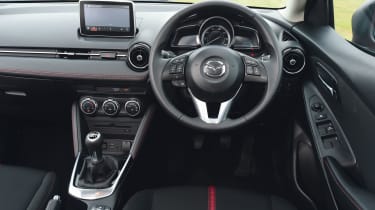
The Mazda's interior has plenty of upmarket appeal. but there are some hard plastics present. Touchscreen dominates the dash, but it can be controlled via an iDrive-style controller located on the centre console.
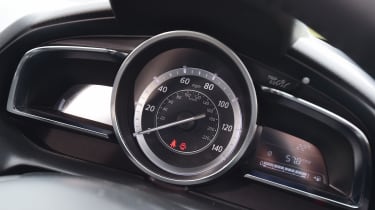
Large speedometer in the centre of the instrument cluster is a nice touch, with the rev counter and trip computer on either side.
- Skip advertAdvertisement - Gallery continues below
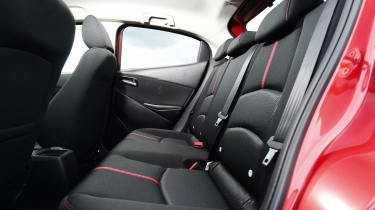
Rear serves up decent head and legroom, but dark trim and small windows make it feel a little claustrophobic.
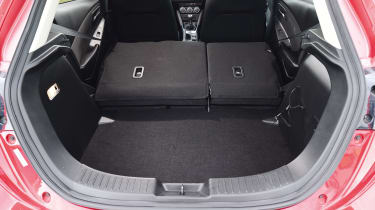
The Mazda's boot is the smallest in this test - at 280 litres - and this increases to 950 litres with the rear bench folded.
- Skip advertAdvertisement - Gallery continues below

Weight-saving SkyActiv tech sees the 2 tip the scales at 1,040kg. This means it's impressively efficient and contributes to the car's enjoyable driving experience.
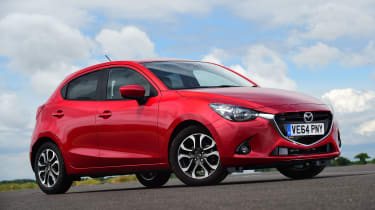
Mazda's latest Kodo design language translates well onto the 2, with bold creases and curves, rising wasit and swooping roofline combining to make an attractive supermini.
- Skip advertAdvertisement - Gallery continues below
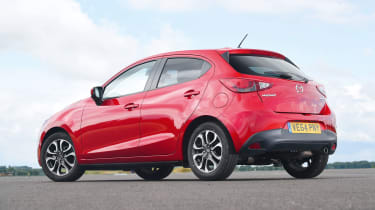
The car looks a little bulbous and heavy-handed at the rear compared with the rest of the car, but overall the 2 is a smart and distinctive small car.
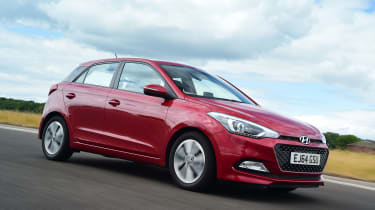
The latest Hyundai i20 matches the class best for quality, practicality and value, plus the diesel version has also beaten the VW Polo 1.4 TDI previously. Here we test it in 1.4 CRDi Premium SE guise, although the car in these pictures
- Skip advertAdvertisement - Gallery continues below
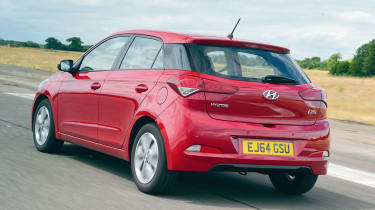
It costs £17,025 - but it comes packed with standard kit, upmarket interior and smart styling.
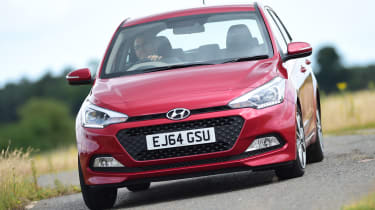
Electronically assisted steering is precise in corners, with well contained body roll and plenty of grip. The low-speed ride is firm, though.
- Skip advertAdvertisement - Gallery continues below
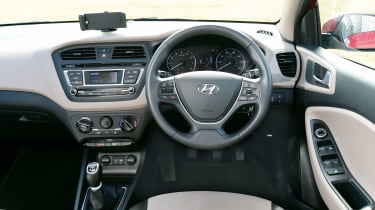
The Hyundai is spacious inside thanks to clever packaging. It's full of top-quality materials, but it looks dated compared with the rivals in this test.

Leather-trimmed gearknob contributes to the i20's premium feel inside.
- Skip advertAdvertisement - Gallery continues below

Rear can seat three adults in comfort.
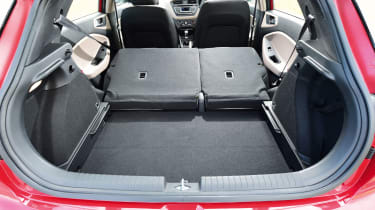
301-litre boot is the biggest here and can be extended to 1,017 litres when the 60:40 split rear seats are folded.
- Skip advertAdvertisement - Gallery continues below
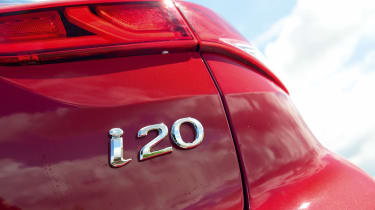
Hyundai's grown-up approach to the i20 makes it easy to live with on a daily basis. The five-year warranty and solid build quality, plus a composed and refined drive combine to make it a sensible long-term proposition.
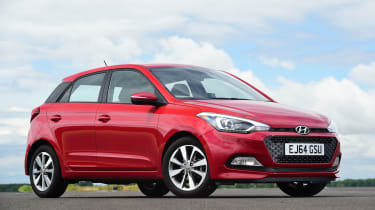
While the i20 is smartly styled and well finished, it lacks the best superminis' flair, particularly inside. The exterior packs plenty of kerb appeal, though, especially compared to the previous model.
- Skip advertAdvertisement - Gallery continues below
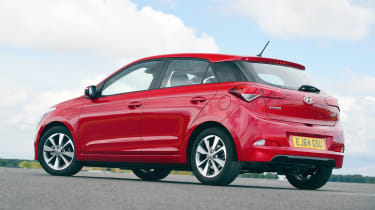
The i20 isn't as sharply styled as the 208 and Mazda in this test, but it's a handsome and well proportioned machine.
Recommended

Car Deal of the Day: Hunting for a hybrid hatch? Get the Mazda 2 Hybrid for under £200 a month

Used Car Hunter: small economical hatchbacks for £8,000
Citroen C3 vs Hyundai i20: a stylish supermini showdown

Hyundai leasing deals
Most Popular
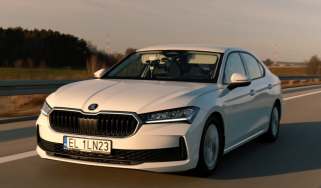
Who needs hybrids? Diesel Skoda breaks world record with 1,759 miles on one tank

Car Deal of the Day: Jaecoo E5 EV brings premium SUV attitude for a compact £243 a month

New Jaguar GT shows off more of its controversial and crucial design